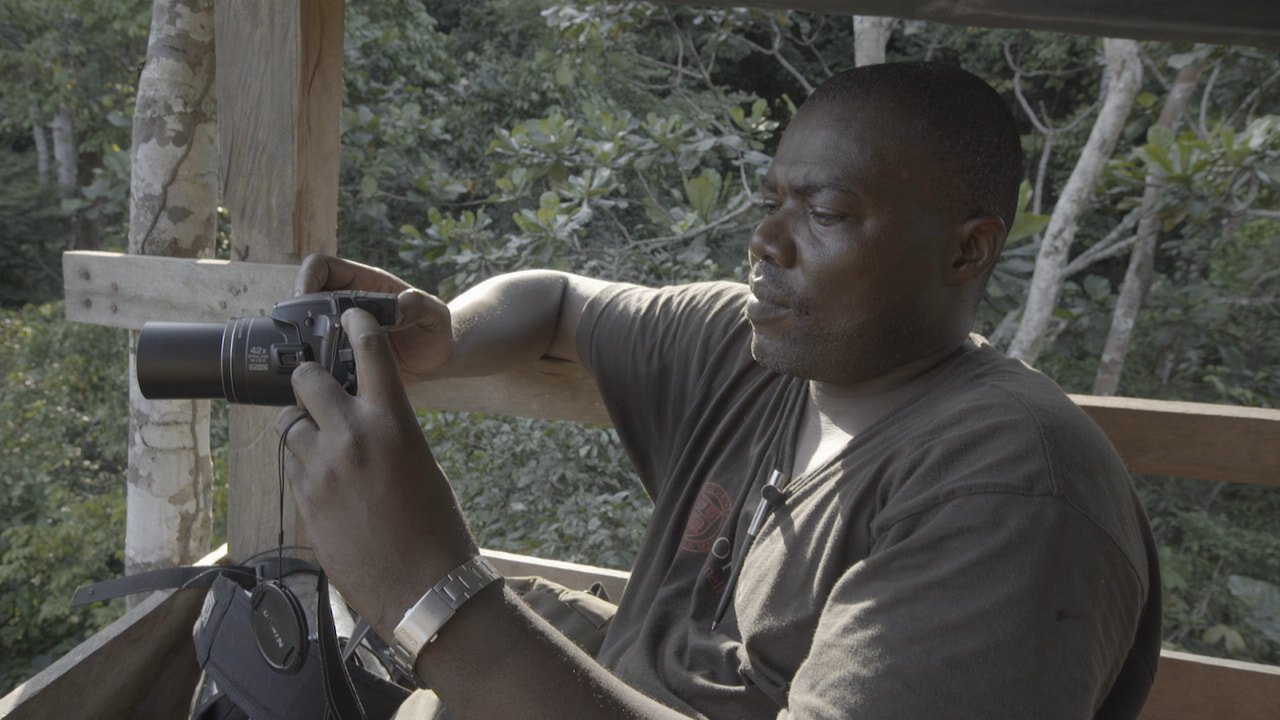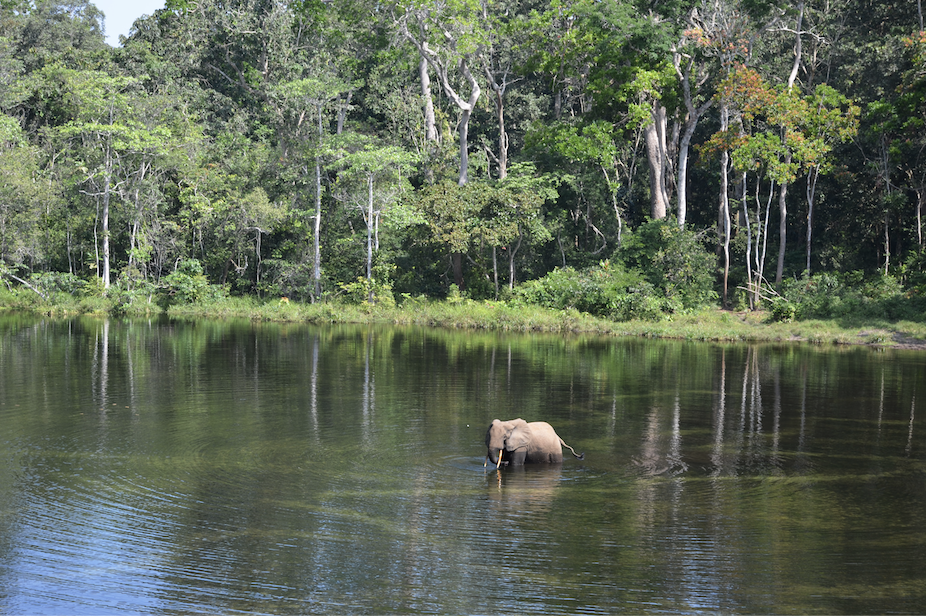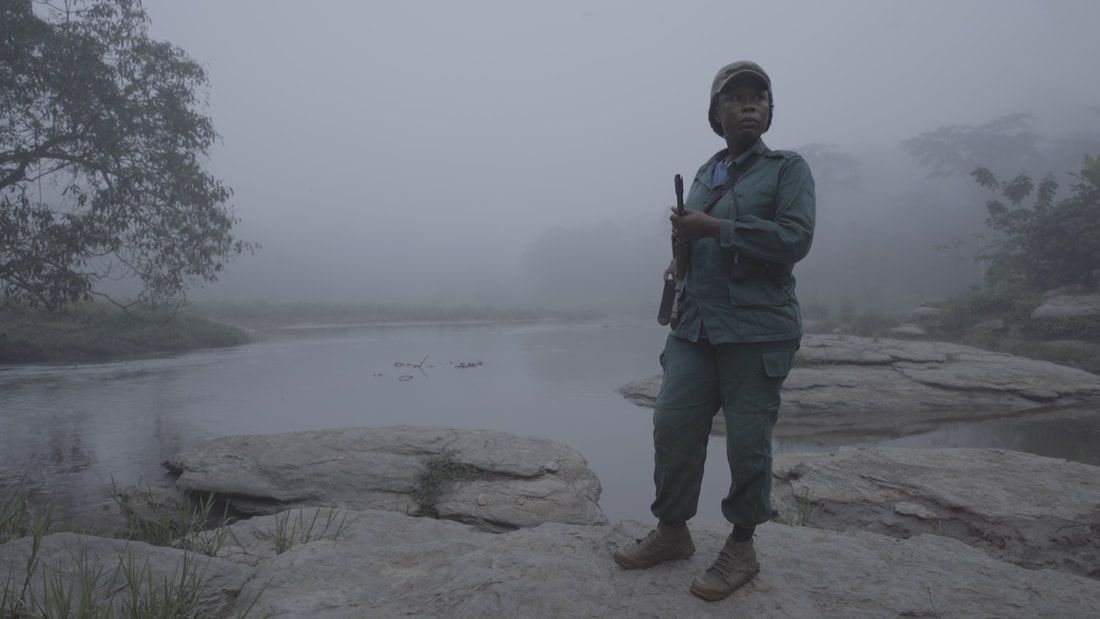|
We reached out to our World Wildlife Day Film Showcase filmmakers to ask them five questions about the experience of making their films.
What inspired this story? Director and Producer Mariah Wilson: In 2015, I completed a short documentary about rhino poaching (KAZIRANGA) and decided I wanted to take on directing a feature about poaching. But I wanted to find an aspect of the global poaching crisis that wasn’t being told by other filmmakers. I had seen a lot of good media coverage about the elephant poaching crisis in the eastern and southern regions of Africa – but that was mostly talking about savanna elephants. Those are the large and very iconic elephants that are in the open plains and grasslands across the continent. As I began to dig in further, I realized there was much less attention being paid to the plight of the forest elephants in Central Africa. Forest elephants are a very important sub-species; they help shape the forest ecosystem and are vital to its health and existence. But they seemed to be getting mostly ignored in news and documentary coverage at that time, and their population was - and still is - being hit really hard by poaching. We have lost approximately 60% of the African forest elephant population in the last ten years. Current estimates have their population at just 40,000 – down from over 200,000 at the turn of the century. These numbers are staggering. At the current rates of slaughter, they won’t be with us very much longer. I had already read about Sidonie Asseme, the female eco-guard in Cameroon, in a WWF newsletter. I realized she was working in the same area where these threatened forest elephants lived. Then I began reading about other bold conservation efforts in the area, like LAGA’s Wildlife Law Enforcement model and Arthur Sniegon’s sniffer dog team. I realized I wanted to tell the story of what was happening in this overlooked and under-resourced region of Africa. What impact do you hope this film will have? MW: My hope is that this documentary will shed light on the severity of the situation in central Africa, and how damaging the ivory trade is for all species -- humans included. I want audiences to leave Silent Forests with a realistic look at what its like to be on the frontlines of conservation in this region day to day… including the dangers, the rewards, the frustrations – and how good efforts are riddled with challenges from dishonest and inept government entities. One unique thing about this film is that three of the four main characters are from either Cameroon or Congo. So this isn't just a story about figures from the international conservationist community going to save Africa's wildlife. This is about African activists, scientists, and eco-guards and who care deeply about what is happening in their own backyards. The very nature of their work can oftentimes put them at odds with their fellow countrymen, and the risks they assume to protect the animals of the Congo Basin are significant. A way in which I hope SILENT FORESTS will help to transform discourse around the subject of poaching is through telling the story of someone who used to be involved in the ivory trade. I think that the viewpoint of a person who has been on the poaching side will bring nuance to an issue that is normally seen as very black-and-white. Former poacher Jean Paul’s story will hopefully allow viewers to see that those at the bottom level of this criminal trade are not just terrible people who have a bloodlust for slaughtering elephants, but that they are driven to commit an extreme and awful act by grinding and endemic poverty. The regret expressed by Jean Paul represents an often-unheard perspective, and his anti-poaching “support” group highlights one unique solution to the problem of poaching – rehabilitating former poachers by offering them alternate forms of income, and getting them involved on the anti-poaching side with financial incentives. The eventual goal of this project is to invoke a sense of urgency about the plight of the forest elephant, and to show the root causes that keep poaching as problematic as it currently is in Africa -- poverty and corruption. My desire is for SILENT FORESTS to educate the public about this overlooked elephant subspecies, and engage audiences to support groups dedicated to ending the forest elephant poaching epidemic before it’s too late. Describe some of the challenges faced while making this film. MW: It was incredibly hard to film the forest elephants at all! It may sound strange, since they are large animals, but the forest is so dense that they are able to hide very well amongst the trees. They are only really visible in the clearings, where they go to drink water. But our first two shoots were in Southeast Cameroon, where the forest elephant population has been exceptionally hard hit. In general, the estimates are that the entire population of forest elephants has dropped over 60% in the last decade - but in Southeast Cameroon it might be closer to 75% gone. We saw signs of elephants on those first two shoots… their tracks, their dung… but we did not actually see a single forest elephant in Cameroon. The ones that were still there were increasingly wary about coming out into the clearings. It was really distressing – both from a conservation perspective, and a production perspective – I was starting to get nervous that we would never get footage of a forest elephant! Finally, on our third shoot in Congo-Brazzaville, we went out with an elephant biologist who studies the elephants at particular clearings. There, we finally were able to capture footage of them (at nighttime with an infrared camera). It was worth the wait – I think the scenes we got are some of the most magical and powerful in the whole film. But I would say that the difficulties we had filming the elephants in Cameroon and Congo-Brazzaville speak to the effect that poaching has had on their population across Central Africa. What drove you as a filmmaker to focus on biodiversity? My second documentary film called VOLUNTEER, and was about my eco-volunteering experiences in Uganda and Fiji in 2009. It was through those eco-volunteer trips that I began to learn about the uptick in endangered species trafficking around the world. Motivated to do something, my focus in documentaries turned towards wildlife conservation, and our global poaching epidemic. In 2015 I formed House Tiger Productions to consolidate my work on projects that highlight anti-poaching activism -- particularly in areas that don’t receive as much news coverage. I wanted to raise audience awareness about lesser-known vulnerable species – like northeast India’s one-horned rhino, featured in my short doc KAZIRANGA and Central Africa’s forest elephant, featured in SILENT FORESTS (2019) and EEYA. I want to continue fostering and supporting bold, unique storytelling via documentaries -- especially stories within the conservation, animal rescue, and wildlife realms. That area is a specialty niche I have carved out for myself over the last decade, and I feel more passionate about it today than ever before. We are witnessing wildfires wiping out millions of animals, oceans being emptied of marine life, endangered species falling victim to poaching and trafficking… I think species loss from human exploitation is one of the most pressing issues of our time. I want to contribute to moving this conversation forward before it’s too late.
0 Comments
Leave a Reply. |
Archives
March 2024
Categories
All
|
Contact UsJackson Wild
240 S. Glenwood, Suite 102 PO Box 3940 Jackson, WY 83001 307-200-3286 info@jacksonwild.org |




 RSS Feed
RSS Feed